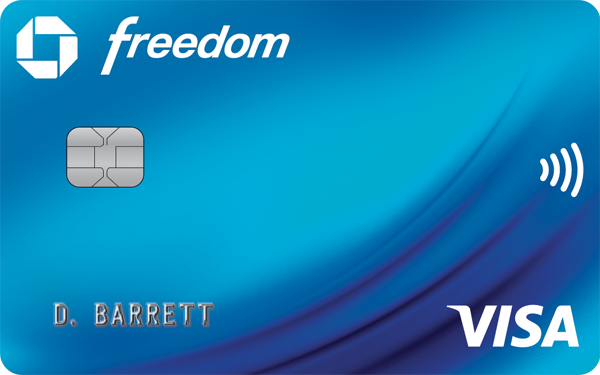Chase Freedom vs Freedom Unlimited: Side by Side Comparison

INSIDER SECRET: If you have your eye on both of these cards and have some big expenses coming up, apply for the Chase Freedom Unlimited first. That’s because the card’s welcome bonus has the potential to be more valuable than that of the Chase Freedom if you can spend more than $5,000 in the first year.
Chase Freedom vs Freedom Unlimited
- Best Sign-Up Bonus: Chase Freedom Unlimited® – If you spend more than $5,000 in the first year
- Best Point Earning: Chase Freedom® – If you spend a lot in rotating quarterly bonus categories
- Best Redemption Value: Tie – Pair either card with another Chase card for more value
- Lowest Annual Fee: Tie – Both have no annual fees
- Lowest Foreign Transaction Fees: Tie – Both cards charge foreign transaction fees
- Best Worldwide Acceptance: Tie – Both are Visa cards with worldwide acceptance
It’s no secret that our favorite rewards program is Chase Ultimate Rewards. Every Million Mile Secrets team member carries the Chase Freedom or Chase Freedom Unlimited (or both) in their wallet. They each have great earning potential because with either card you can earn lots of Chase Ultimate Rewards points on your everyday spending.
Plus, because there’s no annual fee. They’re free to keep forever. This will increase the length of your credit history and can potentially boost your credit score.
Further Reading: Best No-Annual-Fee Credit Cards
So which card is better for you? I’ll compare them side by side to help you figure it out.

Deciding which card is a better fit depends mostly on your personal preferences and spending habits. Let’s have a look.
Which Card Is Better? Chase Freedom versus Freedom Unlimited
Apply Here: Chase Freedom Unlimited
Read our review of the Chase Freedom Unlimited
Apply Here: Chase Freedom
Read our review of the Chase Freedom
Chase Ultimate Rewards are fantastic because they’re so flexible. Yes, you can redeem them for cash back at 1 cent per point. But if you have other cards like the Chase Sapphire Preferred, you can also:
- Redeem points through the Chase portal for travel at a value of 1.25 cents per point
- Transfer points to valuable airline and hotel partners
Further Reading: Chase Transfer Partners
Best Sign-Up Bonus
If you know you’ll be spending more than $5,000 in the first year, the Chase Freedom Unlimited comes out on top in welcome bonuses. That’s because you’ll earn 3% cash back on all purchases in your first year up to $20,000 spent. Spending $5,000 on the card means that you’ll earn $150 (3% x $5,000), but you could earn as much as $600 if you can put $20,000 worth of spending on the card.
The Chase Freedom, on the other hand, only offers the opportunity to earn a $150 welcome bonus (15,000 Chase Ultimate Rewards points) after spending $500 on purchases in the first three months after account opening.
Winner: Chase Freedom Unlimited (but only if you spend at least $5,000 in the first year)
Best Earning Rate
With the Chase Freedom Unlimited, you’ll earn:
- Unlimited 1.5% back (1.5 Chase Ultimate Rewards points per dollar) on all purchases made with the card
And with the Chase Freedom, you’ll earn:
- 5% back (5 Chase Ultimate Rewards points per dollar) on up to $1,500 in combined spending in rotating categories each quarter when you activate the bonus
- 1% back (1 Chase Ultimate Rewards point per dollar) on everything else
If you will be spending $1,500 per quarter ($6,000 per year) in popular rotating 5x bonus categories (which in the past have included restaurants, gas stations, mobile wallets, department stores, and Amazon), you can potentially earn more cash back (or Ultimate Rewards points) with the Chase Freedom. You can earn up to $75 cash back (7,500 Chase Ultimate Rewards points) each quarter ($1,500 X 5%), for a total of $300 cash back (or 30,000 Chase Ultimate Rewards points) per year ($75 X 4 quarters), in addition to your non-bonus-category spending.
Suppose you plan on spending $20,000 annually on either card, making the most of the 5% bonus categories every quarter. Your yearly earnings would look something like the following:
- Chase Freedom Unlimited: $300 cash back ($20,000 X 1.5%)
- Chase Freedom: $440 ($6,000 X 5% = $300 cash back + 1% cash back on an additional $14,000 = $140)
In this comparison, you would earn more cash back/points using the Chase Freedom, if you spend the maximum each quarter in the bonus categories. But for some, the hassle of tracking rotating categories isn’t worth it. So it really comes down to your personal preference and spending habits, and how comfortable you are with tracking categories.
Winner: Chase Freedom
Best Redemption Value
Both the Chase Freedom Unlimited and Chase Freedom cards earn Chase Ultimate Rewards points, which you can redeem for cash back or travel through the Chase Ultimate Rewards travel portal at a value of 1 cent per point. In other words, redeeming 10,000 points would equate to $100 in cash back or travel.
But if you also have the Chase Sapphire Preferred Card, Chase Sapphire Reserve, or Ink Business Preferred Credit Card, you can combine your points to one of these cards and redeem points at a rate of either 1.25 or 1.5 cents per point (depending on the card) through the Chase Ultimate Rewards Travel Portal.
You can also move your points to valuable Chase transfer partners, like Hyatt or United Airlines, for potentially more value.
Million Mile Secrets team member Scott has kept his Chase Freedom card for many years, because it has no annual fee and he loves collecting 5x Chase Ultimate Rewards points in the rotating categories. He used to redeem the points for cash back, but now he moves the points he earns with Freedom to his Chase Sapphire Preferred for free travel. Here’s a video guide showing how to combine Chase Ultimate Rewards points.
Regardless of how you decide to redeem your points, both the Chase Freedom and Chase Freedom Unlimited are great cards to carry.
Winner: Tie
Lowest Annual Fee
Both the Chase Freedom and the Chase Freedom Unlimited have no annual fee. Keeping no-annual-fee cards long term will increase the average age of your accounts, which can help raise your credit score. Here’s more about the best no annual fee credit cards.
Winner: Tie
Lowest Foreign Transaction Fees
Both the Chase Freedom and the Chase Freedom Unlimited charge foreign transaction fees. So they’re not good cards to use when you travel abroad.
Winner: Tie
Best Worldwide Acceptance
The Chase Freedom and the Chase Freedom Unlimited are both Visa cards. So they’ll both be equally accepted around the world. But again, these cards aren’t the best pick for overseas spending. Instead, consider one of the best no foreign transaction fee credit cards.
Winner: Tie
Important Notes
If you’ve opened five or more credit cards from ANY bank within the previous 24 months (not counting certain small business cards), you won’t be approved for either of these cards. So you should carefully consider when and how you apply for Chase credit cards.
Further Reading: Chase “5/24 Rule”
However, if you convert your Chase Freedom card to Chase Freedom Unlimited (or vice versa), you will not be eligible for the welcome offer. Converting your card instead of opening a new card means:
- You can keep the same credit card number
- The information attached to the card would be transferred
- It won’t show up as a new account on your credit history
It only makes sense to convert from one card to the other if your current card doesn’t match your spending habits and you aren’t able to earn the welcome bonus. Or if you really want the card but don’t want it to count toward the “5/24 rule.”
Note: You can also change the Chase Sapphire Preferred into either of these cards.
Bottom Line
Aside from a slightly different welcome bonus and how you earn points, the Chase Freedom and the Chase Freedom Unlimited are nearly identical. So the best card for you really comes down to how you prefer to earn your rewards and whether you’d be able to take advantage of the potentially more valuable welcome offer on the Chase Freedom Unlimited.
Do you like the set-it-and-forget-it convenience that comes with the Chase Freedom Unlimited, which earns 1.5% (1.5 Chase Ultimate Rewards points per $1) on all purchases? Or do you prefer the idea of earning more points every quarter by activating rotating bonus categories like grocery stores and Amazon?
I personally use the Chase Freedom card to earn $75 (7,500 Chase Ultimate Rewards points) per quarter by spending $1,500 combined in bonus categories. Then I use other cards to earn the most points for the rest of my day-to-day spending.
Most of the team keeps the Chase Freedom and the Chase Freedom Unlimited year after year because the cards have no annual fee. Check out our post on the best no-annual-fee credit cards if you’re looking for a card that can help increase your average length of credit history and potentially boost your credit score.
Let me know your thoughts in the comments. And subscribe to our newsletter for more card comparisons like this.
Further Reading:
- Chase Ultimate Rewards Review
- Chase Points Value
- Best Way to Use Chase Points
- Chase Transfer Partners
- How to Earn Chase Ultimate Rewards Points
- How to Setup a Chase Ultimate Rewards Account
- How to Transfer Chase Ultimate Rewards Points
- Do Chase Ultimate Rewards Points Expire?
For the latest tips and tricks on traveling big without spending a fortune, please subscribe to the Million Mile Secrets daily email newsletter.

